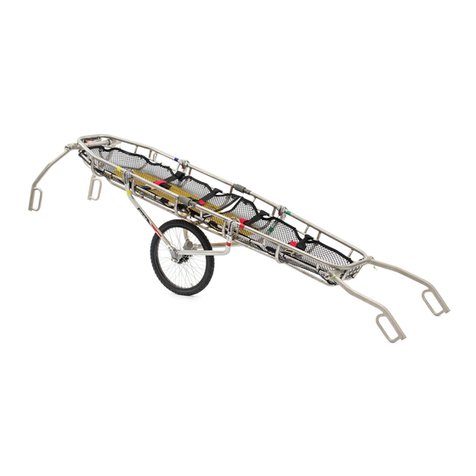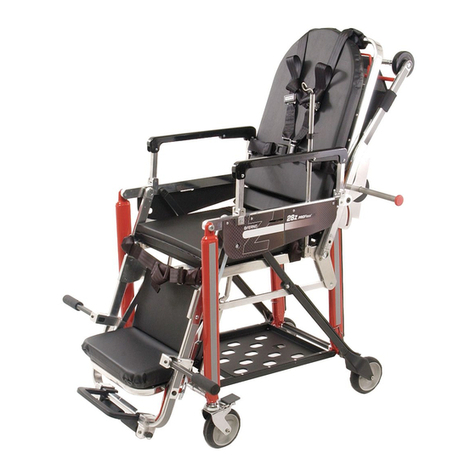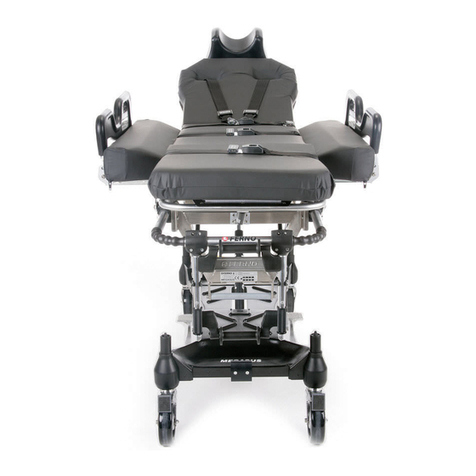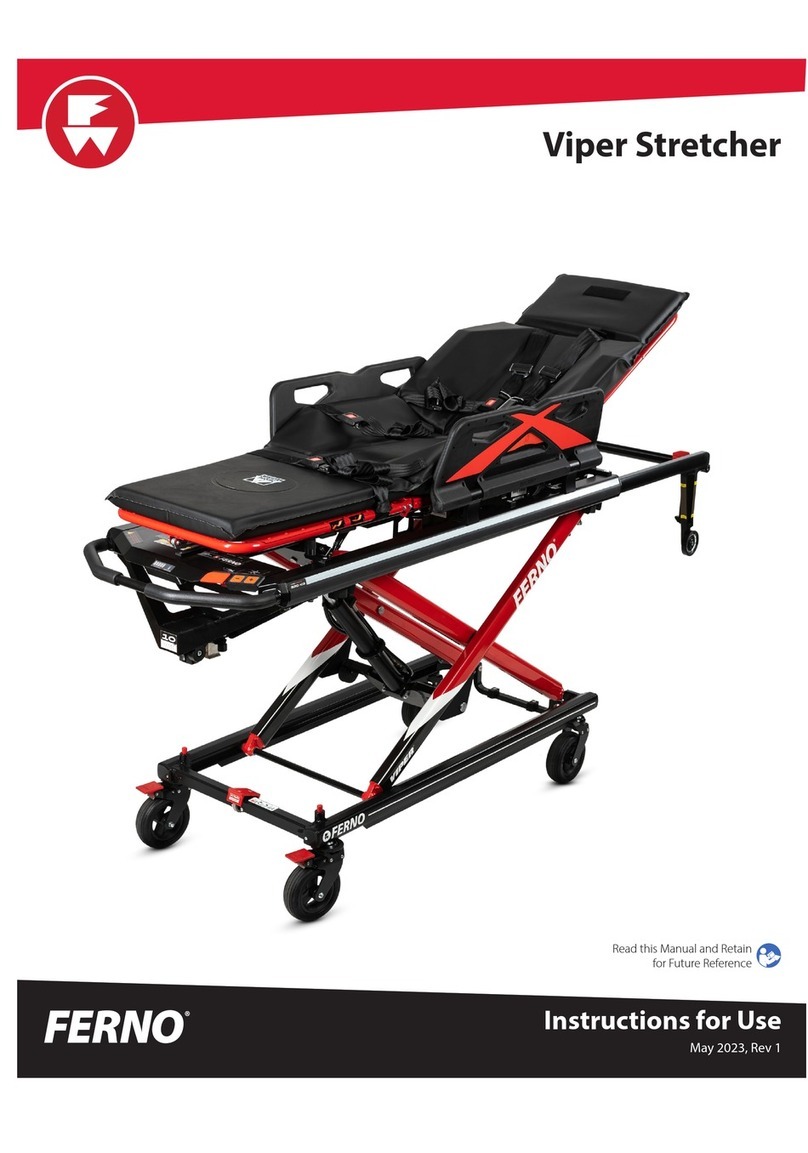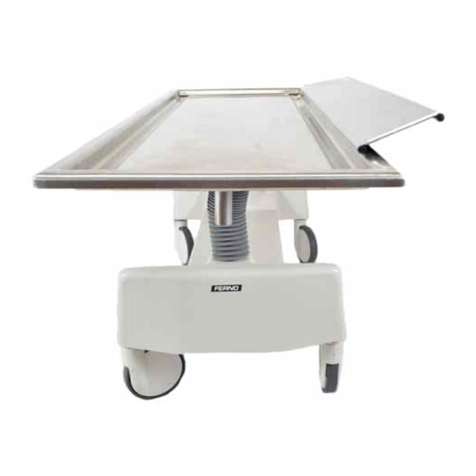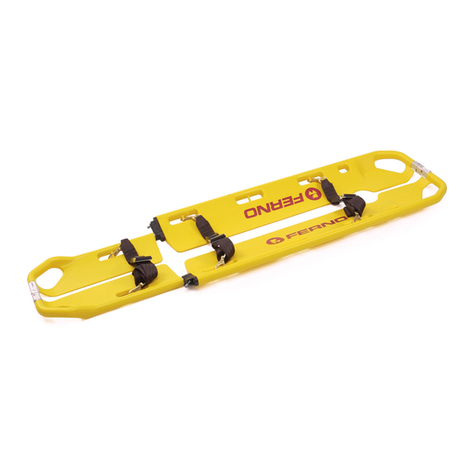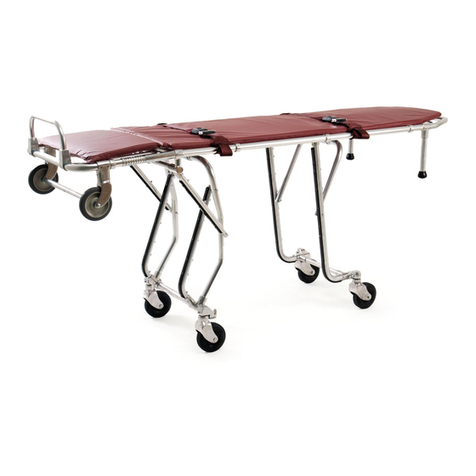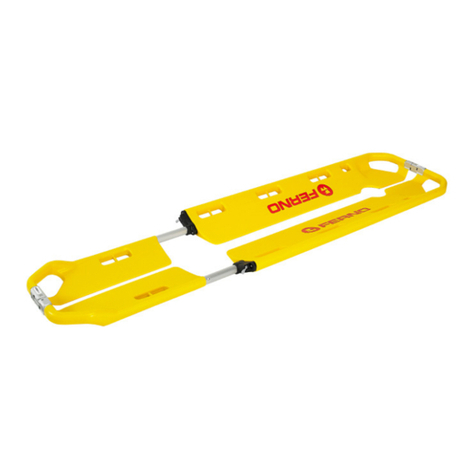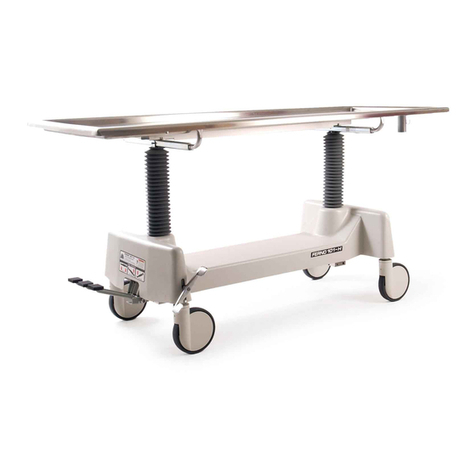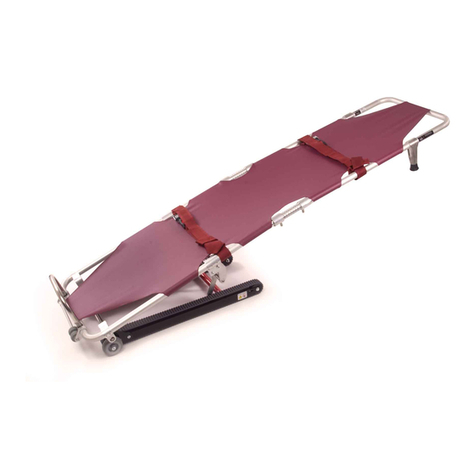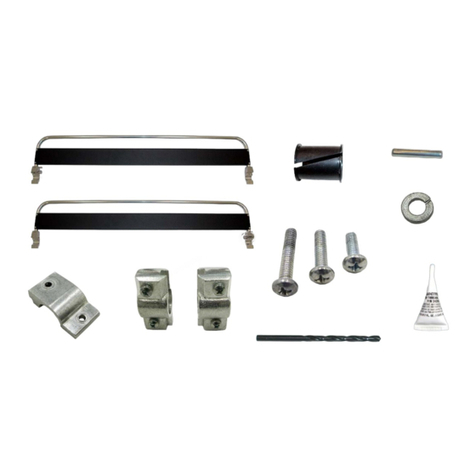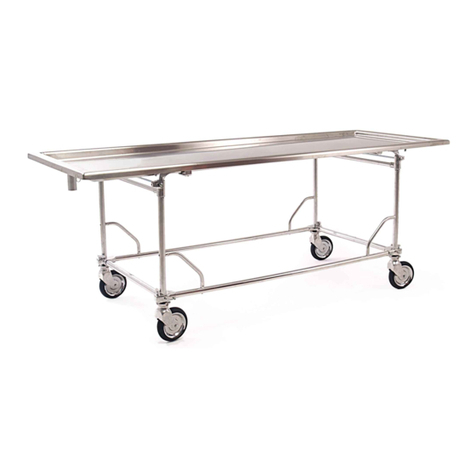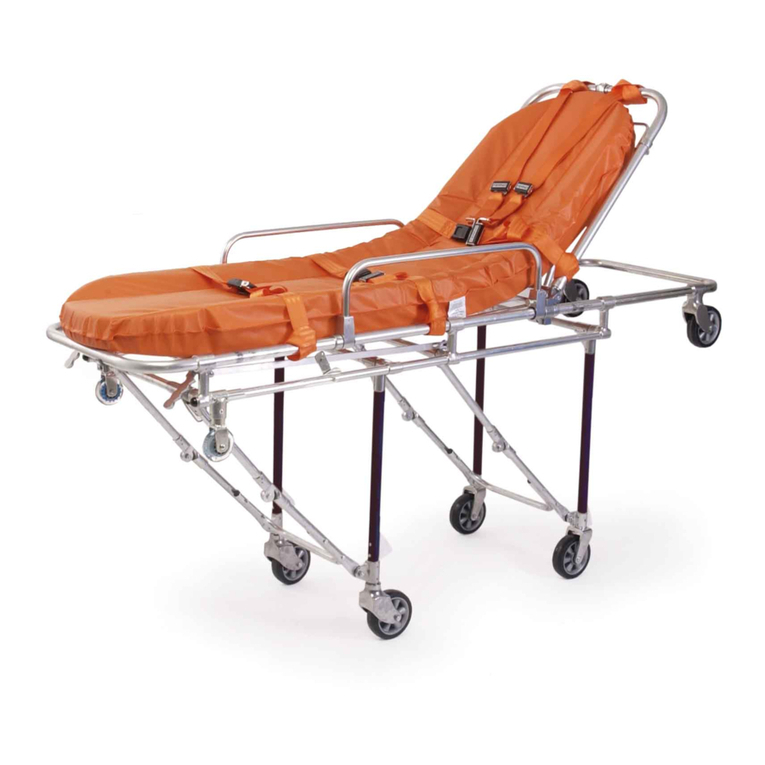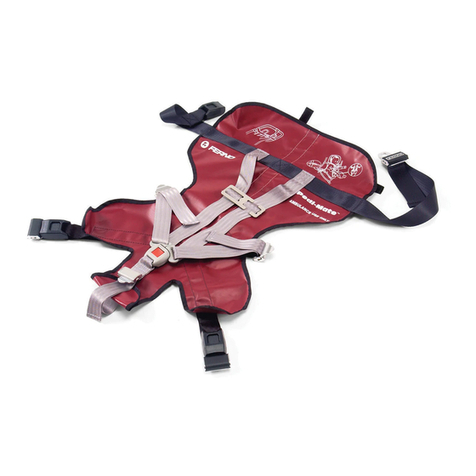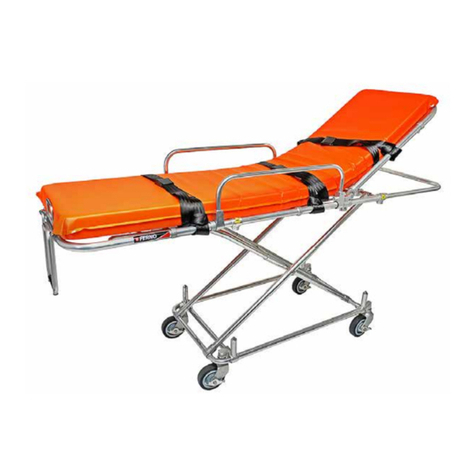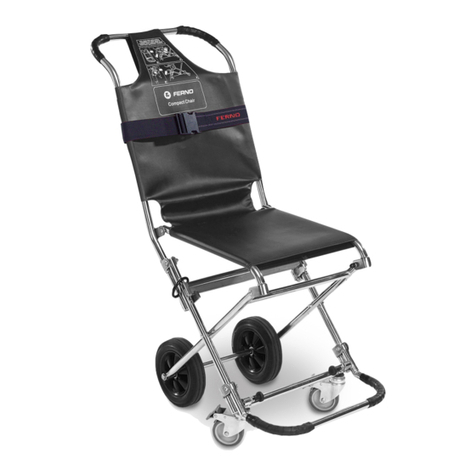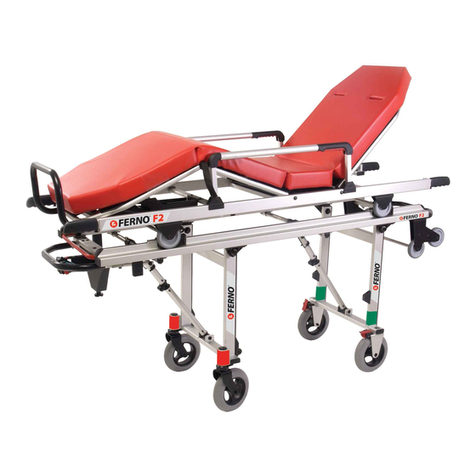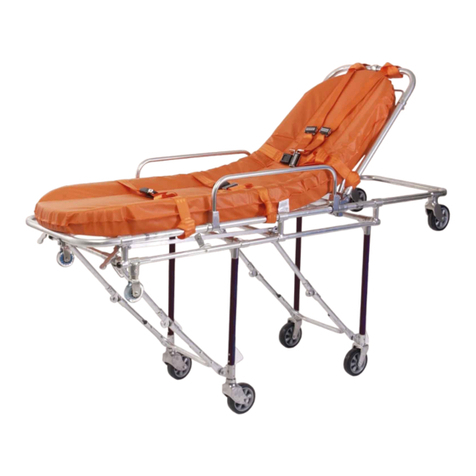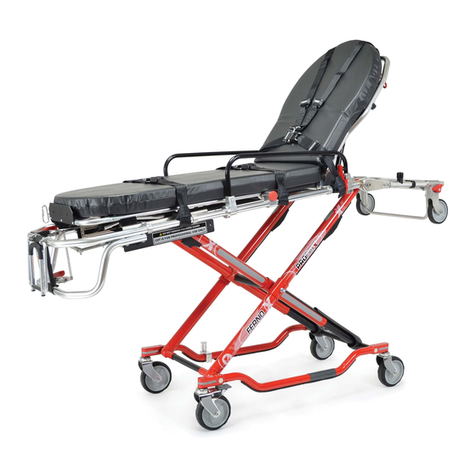
3
© Ferno Washington Italia 26-S - Rel. 241115 ENG
26-S Self-loading Stretcher
Loading capacity
Respect the loading capacity of the 26-S stretcher. Refer to
General Technical Specications.
SAFETY INFORMATION
Read the user manual carefully. It is an integral part of the
product and must always be kept to hand. For your own
personal safety and that of your patients, please note the
following:
– Prior to each use, perform an inspection ensuring that
there are no signs of wear, damage, or malfunction. Refer to
the Inspection section.
– To prevent infection and / or bacterial contamination, refer
to the information in the Disinfection and Cleaning sections.
Warning
The danger symbols draw attention to potentially dangerous
situations that, if ignored, may result in accidents, damage
and/or injury.
WARNING
Untrained users may injure themselves, cause damage and/or
physical harm. Allow only trained and qualied to use the 26-S
stretcher.
The stretcher must be used by at least two trained and qualied
operators. The stretcher is for professional use.
Improper use of the stretcher can cause damage and / or injury. Use
the stretcher as described in this manual.
Unauthorised modication of the stretcher may cause serious
damage, injury and/or unforeseeable operational problems. Do not
modify or alter the stretcher in any way.
Any damage to the components of the stretcher or the entire system
can alter its performance and safety. Inspect the stretcher frequently,
and especially before and after each use. Place the stretcher out of
service if it shows signs of wear or damage.
An unassisted patient is at risk of injury. Never leave the patient
alone while bound to the stretcher. Always assist the patient
throughout all rescue operations.
A patient is not secured by the restraint system may fall and be
injured. Use the restraints to secure the patient to the stretcher.
Failure to use the restraints can cause the patient to fall and endanger
their safety. Always use the restraints to secure the patient.
Casual assistants may cause damage and/or physical harm, or
injure themselves. Do not allow casual helpers to perform stretcher
preparation operations. Trained operators should be alert and direct
operations involving the stretcher.
Improper maintenance may cause serious accidents, injuries and/
or damage. Perform maintenance as instructed in this user manual.
The use of improper or unauthorised devices may cause accidents,
damage and/or injury. Use only devices that have been approved
and authorised by Ferno Washington Italia.
Important
Boxes labelled "Important" contain important
information on use and/or maintenance of the device.
Important
Blood-borne diseases
To reduce the risk of exposure to infectious diseases that
may be transmitted by blood, such as HIV-1 or Hepatitis,
carefully follow the instructions on disinfection and cleaning
in this manual.
WARNING
Unauthorised repairs, and repairs carried out by people not
approved by Ferno Washington Italia, will render all warranties
null and void and may compromise the safety of the device.
Non-original spare parts and inadequate repairs may cause
damage and/or injury. Use only Ferno original parts and contact
only Ferno Washington Italia's Customer Support.
Compatibility with locking systems
The 26-S stretcher is compatible with the Ferno SLAM
locking system for ambulance transport. Ferno recommends
using only Ferno clamping systems with Ferno stretchers,
and to use Ferno locking systems only with Ferno stretchers.
It is recommended to use compatible Ferno locking systems
with the stretcher 26-S.
Any other conguration is not compatible with the
specications and instructions in this manual. Any
combination of a stretcher or a Ferno locking system with
a stretcher or a locking system not produced by Ferno is an
improper use of the Ferno product. Ferno Washington Italia
is not liable for damages caused to users or third parties
arising from improper use of the 26-S stretcher.
